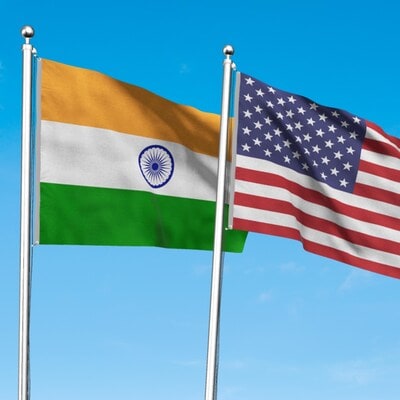The Indian-American community, which will number five million by 2023, has overcome numerous obstacles to rise to prominence as one of the nation’s most significant immigrant groups, according to a report released on Thursday. The report noted that the Indian-American story is one of driven immigrants and their offspring pursuing the American dream.
According to MR Rangaswami, the founder of Indiaspora, although making up just 1.5% of the US population, Indian Americans continue to have a significant and beneficial influence on many facets of US society.
According to him, Indian American-driven innovation benefits the nation’s economy and is setting the stage for future economic expansion.
The first in a series of reports examining the effects of the Indian diaspora in the United States, with a focus on public service, business, culture, and innovation, is the Indiaspora Impact Report: Small Community, Big Contributions, written by Boston Consulting Group.
The report highlights the noteworthy economic impact of the Indian diaspora in the US, highlighting their ability to establish major companies and substantially increase the tax base. It further states that this financial influence is a testament to the perseverance of those who have overcome adversity to make significant contributions to their new community.
16 Fortune 500 firms are led by CEOs of Indian descent, such as Google’s Sundar Pichai and Vertex Pharmaceuticals’ Reshma Kewalramani. Together, these business titans employ 2.7 million Americans and bring in close to $1 trillion annually.
Even though it’s common knowledge that Indian Americans run large enterprises, their influence extends beyond the corporate world.
Indian-Americans are heavily involved in the startup scene; they are co-founders of 72 out of 648 US unicorns. It stated that these businesses, which include Solugen and Cambridge Mobile Telematics, have over 55,000 employees and are worth USD 195 billion.
All around the nation, small businesses are embracing the entrepreneurial spirit. It was stated that around 60% of US hotels are owned by Indian Americans, demonstrating their significant influence on the hospitality sector.
Despite making up only 1.5% of the population, the paper notes that their contributions to the US tax base are noteworthy, estimating that they pay between 5% and 6% of all income taxes, or USD 250 billion to USD 300 billion. Their occupations also indirectly generate 11–12 million jobs in the United States, demonstrating their wider economic impact in addition to their success in large corporations.
The paper claims that the Indian diaspora has made significant contributions to US research, innovation, and academics.
The percentage of US patents held by innovators of Indian descent increased from approximately two percent to ten percent between 1975 and 2019.
In 2023, around 11% of all National Institutes of Health funds went to scientists of Indian descent, and they also authored 13% of all scientific publications.
Consider Navin Varadarajan, a pioneer in immunotherapy who gives cancer sufferers fresh hope. Or Subra Suresh, a former National Science Foundation director whose biomedical technology inventions have transformed healthcare around the world.
Approximately 22,000 instructors of Indian descent, or 2.6% of all full-time faculty, work at US colleges and universities.
Among them are notable figures such as Arun Majumdar, the first female dean of Stanford’s Doerr School of Sustainability, and Dr. Neeli Bendapudi, the first female president of Penn State.
Whether one views the US as a salad bowl or a melting pot, Indian-Americans have had a substantial impact on shaping the country’s cultural environment in a variety of fields, including food, festivals, wellness, cinema, and fashion, according to Indiaspora.
Indian flavors have been incorporated into popular American cuisine by notable chefs like Maneet Chauhan and Michelin-starred chef Vikas Khanna. The popular chain of restaurants owned by Roni Mazumdar, which includes Adda, Dhamaka, and Semma in New York, serves inventive and genuine Indian cuisine.
Indian-inspired wellness regimens, such as those popularized by Deepak Chopra, the man who popularized Ayurvedic medicine and holistic health, have become important cultural trends in the United States.
With origins in India, yoga and ayurveda have become mainstays of American health practices. Since Swami Vivekananda brought yoga to the United States, it has gained popularity as a health ritual and form of exercise. As of 2023, 36,000 yoga studios and 10% of American adults were engaged in yoga practice.
Indian holidays like Diwali and Holi, which feature colorful parades, music, dance, and food, are increasingly frequently observed in the US.
Bollywood’s impact is claimed to be increasing as a result of celebrities like Priyanka Chopra Jonas making a smooth transition to Hollywood and rising stars like Avantika Vandanapu of Mean Girls.
Traditional fashion accessories like henna, bindis, and lehengas are increasingly popular; lehengas can be found at upscale stores like Nordstrom. Celebrity wears the glitzy creations of designers Falguni and Shane Peacock during New York Fashion Week.
The paper states that writers who have explored the Indian-American experience in writing, such as Jhumpa Lahiri and Abraham Verghese, have had a significant influence.
The charitable endeavors of the Indian diaspora demonstrate a strong dedication to giving back and changing lives in both India and the US. Millions of lives have been impacted by organizations like the American India Foundation (AIF), which has raised over USD 125 million.
Through its health and livelihood initiatives, the Desai Foundation—another illustrious organization—has positively impacted the lives of nearly 1.5 million people.
Indian Americans, it added, are making ripples in the democratic arena as senators, congressmen, and mayors.
Over the last ten years, there has been a noticeable increase in the number of Indian Americans gaining prominent positions in the federal administration. In 2013, there were over sixty such posts, and by 2023, there will be over 150. Among them is Vice President Kamala Harris, who became the first female to hold the position.

